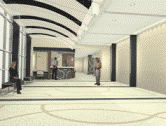
College of Dentistry: Faculty Publications
Document Type
Article
Date of this Version
2016
Citation
Sci. Rep. 6, 27797
Abstract
Non-homologous end joining (NHEJ) is a major DNA double-strand break (DSB) repair mechanism. We characterized here a series of plasmid-based DSB templates that were repaired in Xenopus egg extracts via the canonical, Ku-dependent NHEJ pathway. We showed that the template with compatible ends was efficiently repaired without end processing, in a manner that required the kinase activity of DNAPKcs but not ATM. Moreover, non-compatible ends with blunt/3′-overhang, blunt/5′-overhang, and 3′-overhang/5′ overhang were predominantly repaired with fill-in and ligation without the removal of end nucleotides. In contrast, 3′-overhang/3′-overhang and 5′-overhang/5′-overhang templates were processed by resection of 3–5 bases and fill-in of 1–4 bases prior to end ligation. Therefore, the NHEJ machinery exhibited a strong preference for precise repair; the presence of neither noncompatible ends nor protruding single strand DNA sufficiently warranted the action of nucleases. ATM was required for the efficient repair of all non-compatible ends including those repaired without end processing by nucleases, suggesting its role beyond phosphorylation and regulation of Artemis. Finally, dephosphorylation of the 5′-overhang/3′-overhang template reduced the efficiency of DNA repair without increasing the risk of end resection, indicating that end protection via prompt end ligation is not the sole mechanism that suppresses the action of nucleases.


Comments
Zhu, S. and Peng, A. Non-homologous end joining repair in Xenopus egg extract.
Open access
doi: 10.1038/srep27797